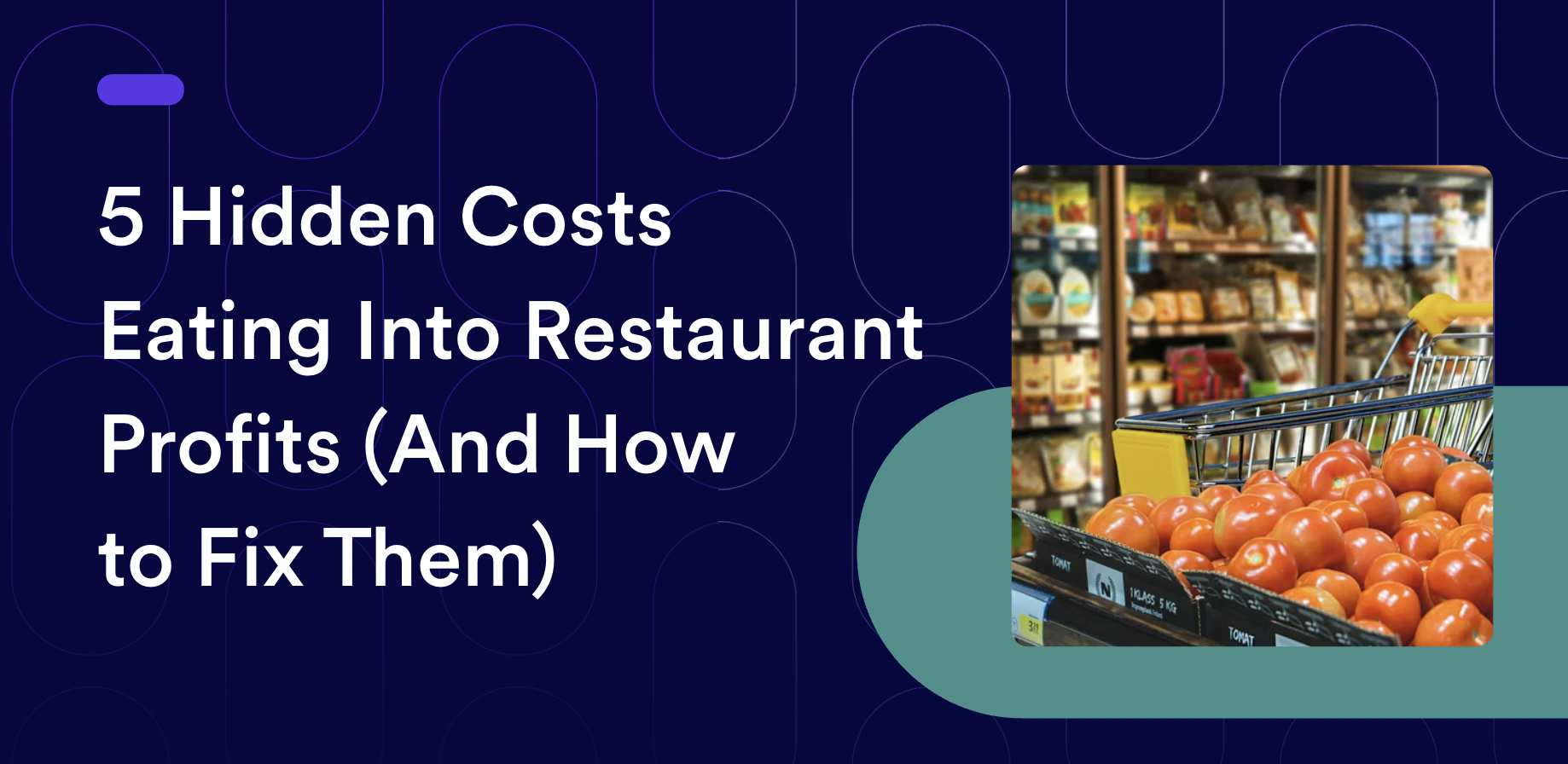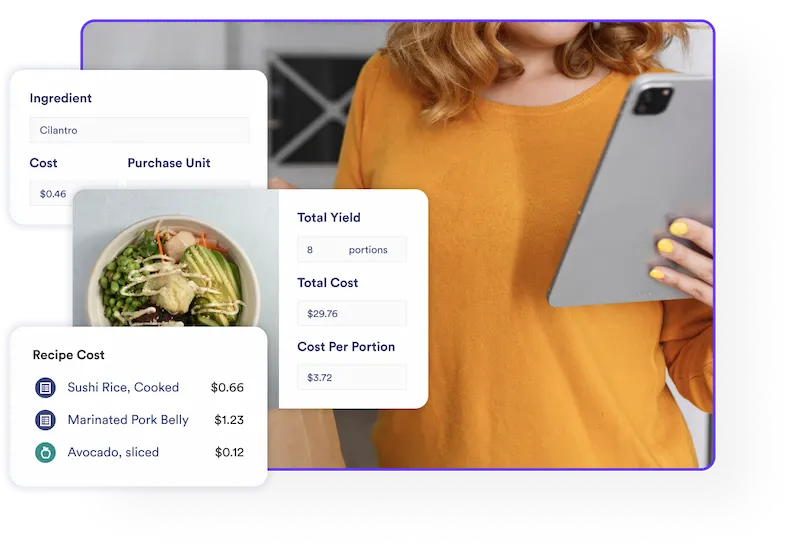Imagine stepping into your favorite restaurant and ordering a plate of enchiladas you've tasted countless times before. As the plate arrives at your table, you eagerly anticipate the smokey flavor and soft texture that has become synonymous with the dish. Now, imagine if those flavors and textures varied with each visit. How willing would you be to come back?
This scenario underscores the importance of a uniform dining experience, where every dish is prepared with meticulous attention to detail and consistency. Proper recipe conversion plays a pivotal role in achieving this uniformity by ensuring that each component of a dish—from the spices and seasonings to the protein and produce—is converted with precision.
Let's go into more detail about why recipe conversions are important—and what you can do about them if math isn’t your favorite subject.
What are recipe conversions?
Converting a recipe involves adjusting the quantities of ingredients to accommodate different serving sizes or switching between measurement systems. This ensures that the proportions remain consistent, resulting in a dish with the desired flavor, texture, and appearance.
Recipes often need to be adjusted to accommodate various situations. The most common reasons are:
- Changing Portion Sizes: Adjusting the number of individual portions a recipe produces.
- Better Utilization of Equipment: Adapting recipes to fit the available preparation equipment.
- Meeting Specific Requirements: Altering portion sizes or batch sizes to meet specific dietary needs or preferences.
- The Ingredient Itself: Calling for 2 lemons, juiced often makes more sense than saying 50ml or 30 grams of lemon juice
Inaccurate recipe conversions effect...
1. Recipe Consistency:
Incorrect conversions can lead to inconsistency in the taste, texture, and appearance of dishes, resulting in a lack of uniformity across servings.
2. Portion Control:
Poor conversion math can result in incorrect portion sizes, leading to either insufficient or excessive servings, which can affect customer satisfaction and food costs.
3. Ingredient Quantity:
Inaccurate conversions may lead to improper ratios of ingredients, affecting the overall quality and flavor of the dish.
4. Recipe Integrity:
Bad conversion math can compromise the integrity of a recipe, altering its intended taste profile and texture, and potentially deviating from the original culinary vision.
5. Waste Reduction:
Accurate conversions help minimize waste by ensuring that ingredients are used efficiently, reducing the likelihood of excess or spoilage.
6. Cost Efficiency:
Errors in conversion calculations can lead to unnecessary expenses through overuse or underuse of ingredients, impacting the restaurant's bottom line and profitability.
7. Customer Satisfaction:
Ultimately, poor conversion math can result in dissatisfied customers who receive inconsistent or subpar dishes, damaging the restaurant's reputation and risking future business.
How to Accurately Convert a Recipe
By converting recipes accurately, you can scale up or down to meet your needs, whether you're cooking for a small group or a large event. While we recommend using a recipe converter tool like meez to save you time, here’s a step-by-step guide if you need to do it manually:
Determine Your Desired Yield
Take a look at the recipe you want to adjust. Usually, it tells you how many servings or portions it makes at the top. This is the information you already have. Then, decide how many servings you want the adjusted recipe to make.
Original Yield: 30→ Desired Yield: 70
Calculate the Conversion Factor:
Divide the desired yield by the original yield of the recipe. This gives you the conversion factor, which tells you how much to increase or decrease each ingredient. You can calculate it by dividing the number of servings you want by the number the recipe currently makes.
For example, if the recipe serves 30 and you want to make enough for 70, you would divide 70 by 30 to get a conversion factor of 2.33.
Apply the Conversion Factor:
Multiply each ingredient amount in the original recipe by the conversion factor. This adjusts the quantities to match your desired yield.
Let's say the original recipe calls for 2 cups of flour. Multiplying 2 cups by 2.33 (our conversion factor) gives us 4.66 cups of flour for the adjusted recipe.
Use Weight Measurements Whenever Possible
It's best to express ingredients in weight rather than volume, especially for dry ingredients. This ensures accuracy in your adjustments. If your recipe uses volume measurements, you may need to rely on conversion tables to find the weight equivalents. If your original recipe uses units like pounds or cups and you need to convert them to smaller units, like ounces or fluid ounces, make those adjustments as needed.
Scaling Bread and Baked Goods - Baker’s Percent
Baker's percentage, also known as baker's math or baker's formula, is a method used in professional baking to express the ratio of ingredients in a recipe based on the weight of flour. It's a standardized way of writing and scaling recipes that allows bakers to easily adjust batch sizes while maintaining the same proportions of ingredients.
In baker's percentage, the weight of flour in the recipe is always set to 100%, and the weights of other ingredients are expressed as a percentage of that flour weight. This makes it easier to scale recipes up or down based on the desired batch size without having to recalculate the quantities of each ingredient individually.
For example, if a bread recipe calls for 500 grams of flour, 300 grams of water, 10 grams of yeast, and 8 grams of salt, we can express these ingredient amounts as percentages of the flour weight:
- Flour: 500g (100%)
- Water: 300g (60% of flour weight)
- Yeast: 10g (2% of flour weight)
- Salt: 8g (1.6% of flour weight)
Using baker's percentage, we can easily adjust the recipe for different batch sizes. If we want to make a larger batch using 1000 grams of flour, we can simply double the percentages of the other ingredients:
- Flour: 1000g (100%)
- Water: 600g (60% of flour weight)
- Yeast: 20g (2% of flour weight)
- Salt: 16g (1.6% of flour weight)
This ensures that the proportions of ingredients remain consistent, resulting in a consistent final product regardless of batch size. Baker's percentage is widely used in professional baking and is a valuable tool for bakers to achieve consistent results in their products.
How to convert between units of measurement
Sometimes, certain ingredients might only be available in specific units of measurement in your location. For example, if a recipe calls for ounces but your local store sells ingredients in grams, you'll need to convert the measurements to have a consistent recipe.
Here's a general guide on how to do it:
- Understand the conversion factor: Each unit of measurement has a conversion factor to convert it into another unit. For example, 1 cup equals 16 tablespoons, or 1 kilogram equals 1000 grams.
- Identify the units in the recipe: Look at the original units used in the recipe. These could be cups, ounces, grams, teaspoons, etc.
- Determine the target units: Decide which units you want to convert the recipe to. For example, if the recipe uses ounces but you prefer to measure ingredients in grams, you'll convert ounces to grams.
- Use conversion factors: Refer to a reliable conversion chart or use conversion factors to convert from one unit to another. You can find conversion charts online or let meez do the math for you.
- Apply the conversion: Multiply or divide the original measurement by the appropriate conversion factor to get the desired measurement in the new unit.
- Adjust other ingredients if necessary: Sometimes, converting one ingredient may affect the proportions of other ingredients in the recipe. Be mindful of this and adjust other ingredients accordingly.
- Check consistency: Ensure that the consistency of the dish is not affected by the conversions. For example, if you're converting from cups to grams for flour, make sure the resulting measurement still yields the desired texture in the final product.
- Round appropriately: Round off the converted measurements to a practical level of precision. In cooking, precision to the nearest gram or milliliter is often sufficient.
How meez helps: automatic recipe conversions
Ensuring proper ingredient conversions in recipes is paramount for consistency, quality control, and efficient kitchen operations. meez emerges as a valuable ally in this pursuit, offering a range of tools designed to streamline the conversion process.
With its built-in recipe converter, precise ingredient percentages calculator, and seamless recipe scaling features, meez simplifies the task of converting between units of measurement, allowing chefs and kitchen staff to:
- Create a uniform dining experience
- Easily fine-tune and resize recipes
- Manage resources effectively
- Foster a culture of excellence
Want to see meez’s ingredient conversions in action? Take a 2-minute interactive tour.







